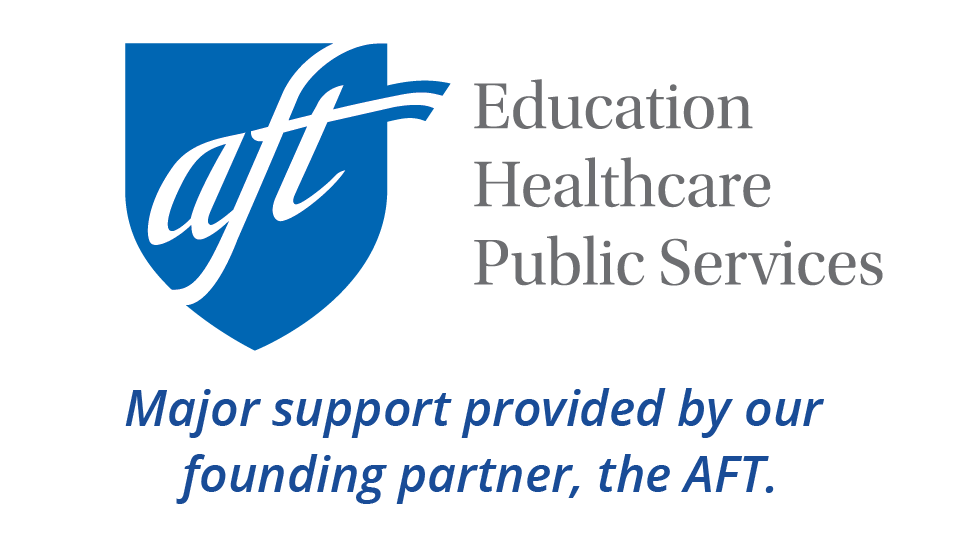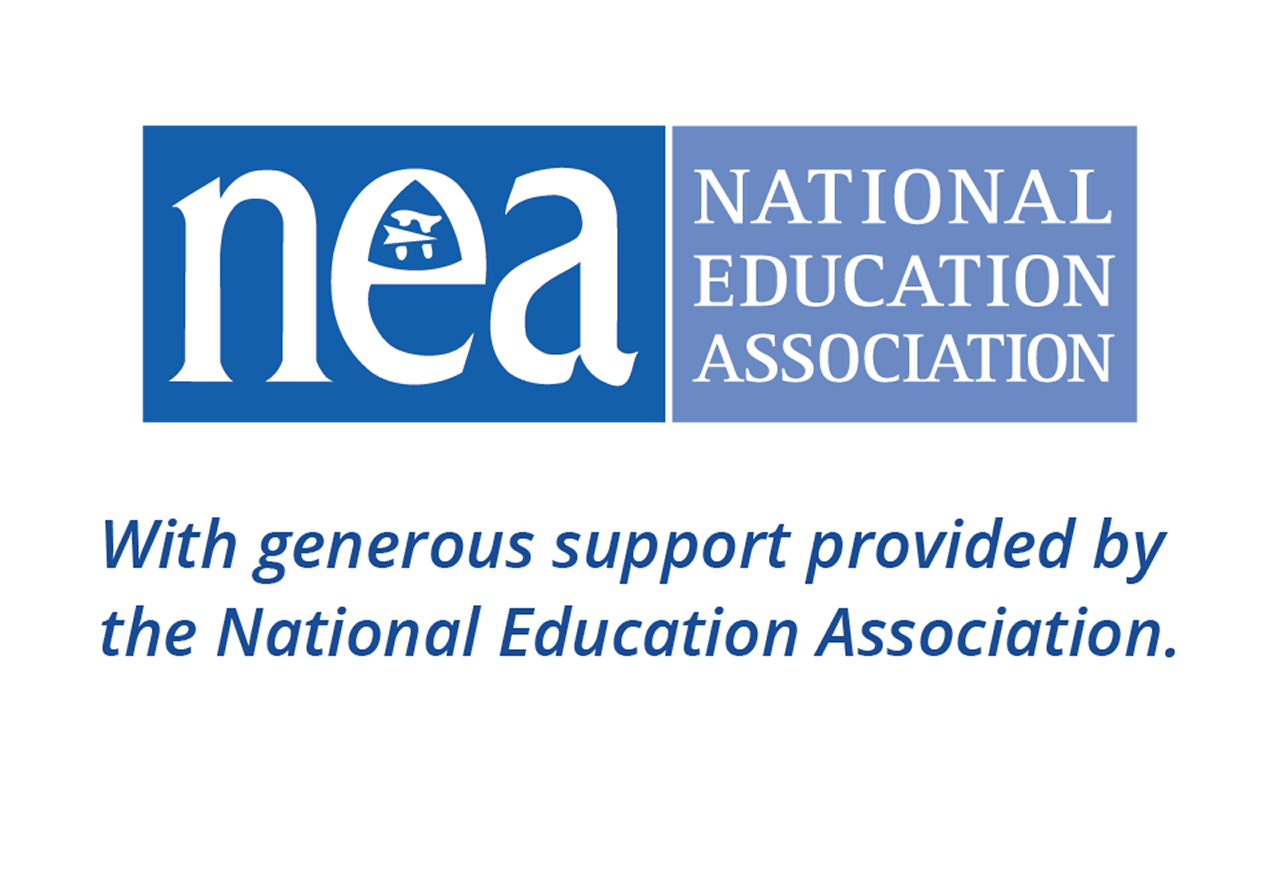We are trying to find answers for students and families we care deeply about.
– Kristina Robertson, English Learner Program Administrator, Roseville Public Schools (MN)
Overview
Download tip sheet:
Across the country, educators are looking for ways to support immigrant students and families facing great uncertainty. In some cases, these efforts have started at the top with district leaders, school board members, school principals, and early childhood program directors; in other cases, the efforts have been smaller and quieter, often taken on by a single individual whose actions ripple outward in meaningful ways.
Since educators and parents of English language learners (ELLs), many of whom are immigrants, refugees, and unaccompanied minors, are the heart of our audience, we have been tracking these issues very closely. This guide highlights strategies educators can use to ensure that schools and early childhood settings remain safe, welcoming places for all children. Our recommendations are based on input and examples from:
- the American Federation of Teachers (AFT) ELL Educator Cadre
- our network of National Education Association (NEA) educators
- our national audience
- related news stories, research reports, and resource guides.
We also include responses to a survey we conducted in 2017 and research from the UCLA Civil Rights Project on the impact of immigration enforcement on schools. You can learn more about this research from our webinar with Dr. Patricia Gándara and Shena Sanchez. In addition, we include resources created and compiled by numerous organizations.
The examples throughout the guide showcase schools and early childhood centers that are striving to become more welcoming, build bridges with families, and create new leaders within their school community. It is our hope that other educators will find inspiration from their stories.
Who are immigrant students?
Immigrant students may include:
Special populations: ELLs & immigrant students
Learn more from:
- Recently arrived newcomer students
- Refugees
- Students with interrupted/limited formal education
- Unaccompanied minors who came to the country without their parents
- Children of migrant farmworkers
- Children who are undocumented
- Children who have been separated from parents/family members at the border
- Immigrants with Temporary Protected Status
- DREAMers (young people eligible for Deferred Action for Childhood Arrival, or DACA)
It is important to remember that a large share of children that are affected by immigration issues are themselves U.S. citizens. All children born in the United States — including children of undocumented immigrants — are U.S. citizens. In these "mixed-status" families, at least one member of the household is undocumented, while others are U.S. citizens or authorized immigrants.
In their research on the impact of immigration enforcement on schools, The Civil Rights Project at UCLA shares the following data:
- It is estimated that about 88% of children of immigrants were born in the U.S. and are therefore U.S. citizens.
- There are 4.5 million children with at least one parent who is undocumented; 1.6 million of those children are under the age of 5.
- As of 2017, there were an estimated 600,000 children and youth in the U.S. under the age of 18 who are undocumented (Gándara & Ee, 2018a, p. 3).
Californians Together reports that in the state of California:
- half of all children have at least one immigrant parent.
- nearly two million children live in “mixed-status” households.
- at least one in eight students have at least one undocumented parent (Californians Together, 2017).
Immigration policies have the potential to affect millions of students in U.S. schools and early childhood settings, particularly when taking into account the combined impact of intensifying immigration enforcement measures, travel restrictions, changes to Temporary Protected Status programs and DACA, and changes to U.S. visa programs or rules regarding immigration status.
How do these issues impact schools?
All students in public K-12 schools have certain educational, civil, and privacy rights regardless of immigration status. It is critical for schools and districts to understand what those rights are; to review whether their policies protect those rights for all students; and how those policies are being implemented throughout the district.
At the same time, changes to federal immigration policies have resulted in two trends that this guide addresses:
- Schools are looking for guidance on how to respond to questions from students, families, and staff on immigration issues.
- Educators and researchers are noticing troubling patterns in both early childhood and K-12 settings in terms of the social-emotional health of their immigrant students.
While not all students are having these experiences and many demonstrate high levels of resilience, researchers have documented some trends nationally, which include:
- an increase in social-emotional distress
- an increase in the bullying of immigrant students
- a decrease in motivation and engagement
- a growing sense of distrust and isolation among students
- a changing constellation of factors impacting immigrant families' levels of stability.
While educators should never make assumptions about a family's situation, it is important to note that even if students or families haven’t mentioned these concerns, they still may be experiencing these issues and not sharing them with others. (For an in-depth discussion about immigrant students' silence when it comes to discussions of immigration or citizenship, see our related section on this topic.)
In addition, immigration enforcement activity (or the fear of such activity) can impact student attendance, participation in school activities, and parental engagement in both K-12 and early childhood settings, particularly as schools grapple with ways to increase student safety and school security. For example, Dr. Eva Thorp (2017) writes that many teachers she has worked with "report that immigrant parent participation in school-based or volunteer activities has decreased in part…because of extra security measures, which may deter immigrant families from feeling that the can safely enter the school building." These steps might include leaving a photo identification at the front office, for example, in order to visit a child's classroom (p. 36).
These impacts are not limited just to immigrant students – classmates and educators can be affected by these trends and events as well, as described in our article about a massive immigration raid in Postville, Iowa in 2008. Many educators nationwide are reporting increased levels of stress and anxiety among other students and classmates, educators, staff, and the broader school community with respect to immigration issues and immigration enforcement in particular.
In our webinar about the UCLA research on the impact of immigration enforcement in schools, Dr. Gándara notes, "More than ever, it is important to reinforce [to immigrant students]: 'We really want you here at this school. We care about you and we want you here'" (Gándara & Sanchez, 2018).
Research on immigration raids
According to the National Association for Secondary School Principals (NASSP), arrests due to immigration enforcement increased by 300% from 2017 to 2018. In addition, NASSP cites research from the Urban Institute and UnidosUS (formerly National Council of La Raza) conducted in communities affected by immigration raids finding that “the number of children affected was about half the number of adults arrested.”
In some cases, where school officials had prior notification of the raids:
(S)chools were able to ensure that students whose parents were detained in the raids had a safe place to go after school. School leaders and teachers reported that they felt ‘a heavy burden’ helping the students maintain a normal school routine while dealing with the aftermath of the raids. The fear created for immigrant parents and students resulted in symptoms of mental health problems that affected students’ academic performance. Months after the raids, however, students seemed to have benefited from normalized school routines and the support and services provided by their schools. (p. 2)
Recommended Resources
Articles and Guides
- Creating a Safe Environment for Immigrant and Refugee Students, Families, and Communities (Grantmakers Concerned with Immigrants and Refugees)
- 4 Practical Steps to Help Immigrant Families in Your School Community by Dr. Emily Crawford-Rossi and Dr. Lisa M Dorner (Education Week)
- Migration, Displacement, and Education: Building Bridges, Not Walls (UNESCO Global Education Monitoring Report, 2018)
- All In! How Educators Can Advocate for English Language Learners (National Education Association)
- Advocating for English Learners: A Guide for Educators by Dr. Diane Staehr Fenner (Corwin & TESOL, 2014)
- Educator Guide: Supporting Undocumented Students and Their Families (Informed Immigrants)
- Immigrant Students Are Internalizing Stereotypes. Educators Can Help (Education Week)
Immigration data and research
For comprehensive data on immigration, look at the Migration Data Hub from the Migration Policy Institute, as well as the resource library compiled by Grantmakers Concerned with Immigrants and Refugees (GCIR).
GCIR has also published a guide entitled, “What Can Philanthropy Do? Coming Together for Children in Immigrant in a Changing Policy Landscape.”
Researchers studying immigrant students
For in-depth research on immigrant students (including undocumented and refugee students), see the work of the following centers and scholars:
- CUNY-IIE Initiative on Immigration & Education
- Dr. Leisy Abrego (University of California-Los Angeles)
- Dr. Germán Cadenas (Lehigh University)
- Dr. Frances Contreras (University of California-San Diego)
- Dr. Emily Crawford-Rossi (University of Missouri)
- Dr. Dafney Blanca Dabach (University of Washington)
- Dr. Sarah Gallo (Ohio State University)
- Dr. Roberto Gonzales (Harvard University)
- Dr. Patricia Gándara (University of California-Los Angeles)
- Dr. Bryant Jensen (Brigham Young University)
- Dr. Leigh Patel (University of Pittsburgh)
- Dr. William Pérez (Claremont Graduate University)
- Dr. Sophia Rodriguez (University of North Carolina, Greensboro)
- Dr. Jill Koyama (University of Arizona)
- Dr. Carola Suárez-Orozco (University of California-Los Angeles/Re-imagining Migration)
- Dr. Marcelo Suárez-Orozco (University of California-Los Angeles/Re-imagining Migration)
- Dr. Julie Sugarman (Migration Policy Institute)
References
See our complete reference list for works cited in this article.







Add new comment